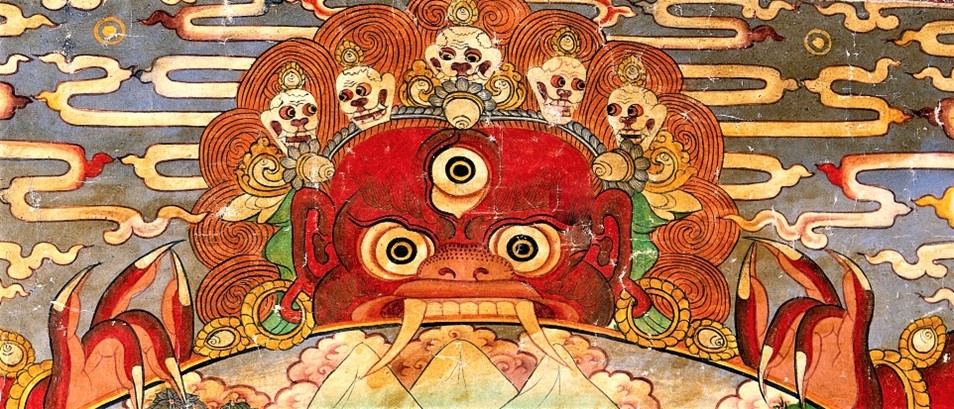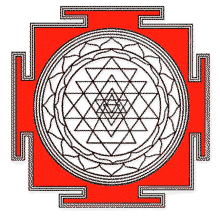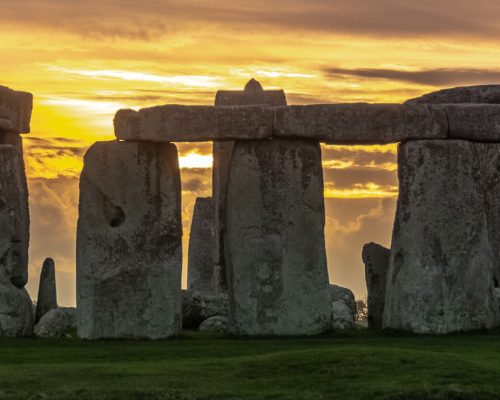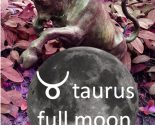
Life, Death & Rebirth
Life, Death & Rebirth & ’The Wheel of Existence’
“Regard this phantom world
As a star at dawn, a bubble in a stream,
A flash of lightning in a summer cloud
A flickering lamp — a phantom — and a dream.”
Buddha ~ Diamond Cutter Sutra
The above image is ‘Yama’, the Vedic, Himalayan, and Buddhist ‘Lord of Death’. In the most ancient Vedic text dating back to 1900BC, the Rig Veda, which means ‘praises of knowledge’, many Gods are classified, with Yama named as the son of Sun God, ‘Surya’. In the high Himalayas, from where the tradition of spiritual teachings in this short study herald, Yama is seen as a dharma protector, a ‘Dharmaraja’ guardian of spiritual practice. Yama’s name means ‘restrainer’ and his protection is directed from the south, the Cardinal direction associated with the spirit of the fiery Sun. The southerly direction is also governed by the Fire Element which purifies by burning away any dross. Fire can also be a gateway to hell as wildfire consumes all in its’ path. And although Yama is demonic looking, it may be comforting to know there is also a warm and welcoming ‘Heaven of Yama’ coming from the usually red-bodied ‘Lord of Death’.
Death is a difficult subject for many and considered a taboo subject, but it is also part of life, for this is a dualistic world after all. As such, Yama is also a twin. His sister is Yami or Yamuna, represents the river and the feminine water element and being in flow. According to Hindu mythology, Yama is also younger brother of Shani, which is Joytish for the planet known in western astrology as Saturn, ‘Lord of Time’, karma and limitation, boundaries and endings.

Indeed, in the image of the ‘Sri Yantra’, which is a meditational tool to reach higher states of consciousness, the first triangle formed in construction is between lines that represent Sun and Saturn (each line represents a visible planet, and also including the moon’s invisible nodes). From the astrological perspective the Sun’s connection to planet Saturn, as Lord of Karma, i.e., Yama’s father and brother, are specifically noted when determining individual karma within the horoscope, where difficult aspects can indicate tough karma. The whole horoscope is our actual karma, whether intentional, accidental or fated. It is Saturn, however, in relation to the Sun, that reveals how and where we discover the work to do, as well as the fears surrounding any physical, intellectual, or spiritual ambition/desire/karmic obstacle in the horoscope, which is therefore symbolic of hurdles in the path of our own evolutionary process.
Yet one thing we can all count on is that death comes to us all, and we know not when. And, as death approaches, like Saturn exalted in the balancing sign of Libra, Yama, as ‘Lord of Justice’, assess a person’s karma. Red-devils and demonic figures depicted at the time of death represent ghoulish images to portray the fear and hallucinations we can be faced with if we haven’t dealt with Saturnian responsibilities and contained Sun’s ego before dying, which is why it’s so important to acknowledge the way towards a peaceful death:
☉ Physical – aware of impermanence, the body breaks down, normally from old age followed by sickness and death.
☉ Psychological – ego obstacles to overcome for a good death involve confessions, asking for forgiveness, conversion, or confirmation, before relaxing into eternal peace.
☉ Spiritual – obstacles in meditation, which can include the wrong view of emptiness – as can mental afflictions. A helpful view is seeing how a physical life is fleeting and is but a blink in the eye of Brahma, like ‘a star at dawn or a bubble in a stream’.
In the end it’s not what we do, but how we do it. And it’s not who we were – or are, but who we bubble along with and the relationships we have and had; so that at the time of death and departure a dedication and giving thanks for a life serving others is a gift from the ancestors to future generations.
When comparing other cultures and religions mythology and beliefs, superstitions and customs surrounding death, dying, and the death process itself, and although this is a difficult subject for many, there is a rich and fertile cultural history to be researched. A certain similarity can also be found between the Egyptian jackal-headed Anubis, and the Christian St Michael, who also share the image of scales when weighing-up a persons fated and/or freely made thoughts, words or deeds. The zodiac sign of ‘The Scales’ is Libra, symbol of balance and harmony, peace, and loving relationship. Libra was originally held by the claws of Scorpio, which is the sign of death and rebirth. Should the dead person’s bad karma tip the scales’ pans for Yama, a poor soul could descend into the Hell realms (Naraka Sanskrit) or, on the brighter side, should conditions generate positive karmic merit a rebirth in the Heavenly Pure Realms could await (Swarga Sanskrit), with fantastic lives lasting hundreds of thousands of years – but even they don’t last forever. In the enlightened state, only a powerful and compassionate love pervades: all sacred texts teach that with ethics, wisdom, and meditation, one can achieve such enlightenment, and find liberation (Moksha) and Nirvana in this very lifetime.
Confronting Yama could seem like a nightmare. Yet illustrating how life is like an illusion, the accompanying ‘phantom dream’ quote is from an exemplary historical being, meditator, defeater of demons, and teacher of the true nature of reality, the Buddha. Correctly understood, it is our perception of reality which is the illusion, ‘Maya’ – particularly the illusion we hold of our ‘self’. Ultimately, all is an illusion. Self is everywhere and nowhere. But while Yamantaka is a destroyer of illusion, this is still a relative world, filled with anxieties and ambitions. In this respect, the quote also highlights one of the most important aspects of the wisdom teachings which is ‘impermanence’ or ‘Annica’ (Sanskrit), i.e., nothing lasts forever – not even devilish Saturn’s ambitions of empire and command; buildings can crumble and dust returns to dust. Saturn’s imposing position as Kronos the Time Lord is also usurped by Jupiter, his most glorious offspring (indeed, as Saturn himself did to his own father, Uranus). Majestic Jupiter’s conquest over ‘Old Father Time’ indicates overcoming obstacles requires faith and confidence. Jupiter brings knowledge and blessings to be generously showered with karmic merit by eliminating the negative and destructive for a clear spiritual path.
From the astrological point of view, the whole chart is our actual karma, from which we can understand how karma works, from planting the karmic seed to its’ ripening, ideally without it affecting our emotional, rational or spiritual equilibrium. Karma refers to action, as in the law of cause and effect. Though the cause is not always self-determined, we can ourselves experience the results. Karma, while mostly assumed to be personal, can also be generational (as in the karmic connections and transits to and from transpersonal planets). Karma can even come from left field – ‘throwing’ karma takes you to a different stage in the process of becoming wholly synthesised.
From birth to death everything comes, goes and changes. Planets, people, things, ideas, all are in a constant state of flux and flow. From the moment of our inception, conceived from the light of Spirit igniting the elements into growth, with all being well, we are then born, grow, reach a peak we hopefully sustain for a while; and then, after a period of decline, a life has been lived and death brings a body to its conclusion. Yet my understanding, as taught in the Kalachakra Tantra (Kala= time, Chakra= wheel) is that spirit – as mindstream – never dies, it only transforms, so in a sense we experience both immortality and impermanence. When a person is in the process dying the elements that are the building blocks of creation are re-absorbed into the natural world – even if it is only as ash and relics feeding the rose garden, the remains of a body are infinitely and elementally connected; and with that there is an element of eternal immortality. Throughout life, if we all maintained our natural relationship to the Elements, the trees, the land and water, I proffer it would also lead to more peaceful deaths – and, from the Buddhist point of view, many happy rebirths.
Life, death and rebirth make the ‘Wheel of Life’ go around. Note that rebirth and reincarnation are different. From the Buddhist understanding a rebirth happens when ‘consciousness’ or the ‘mind-stream’ flows from life to life; while reincarnation has more personal connotation, by recognising past lives, for example Tibetans have a system in place that enables high Lamas to recognise a reincarnation such as His Holiness, the 14th Dalai Lama.
The Wheel of Life
The Tibetan ‘Wheel of Life’, the ‘Bhavacakra’ (Sanskrit), with four concentric circles, is held by Yama, as taught by the Buddha thousands of year ago. This cyclic wheel of existence is also known as the twelve links of the ‘Wheel of Dependant Origination’ depicting the whole of ‘Samsara’, the name for the great cosmic ocean which contains (the memory of) all realms and means the ‘sea of suffering’. The outer ring, like the zodiac, has 12 different sections. These are called ‘Nidanas’, which are the twelve links of causation. Although there is no definitive association to unify East and West with the zodiac’s circle of animals and the Buddhist causal links of dependant origination, there are interesting comparisons. Through the Wheel of Existence, the Buddha taught that life begins in ignorance and goes all the way around to aging & death. The next section shows six different realms or bardos, including human and animal, they contain lowly hell realms to elevated pure god realms. The black and white wheel symbolises active and passive karma; with the inner wheel showing three animals: a snake, rooster and pig which represent the three poisons of aversion, craving, and ignorance respectively. Essentially, the wheel is a tool for meditation and understanding how karma works, i.e., if we live a helpful life we can look forward to a (hopefully) restful afterlife – at the very least our memory of the aggregates in this vehicle will be held in good esteem. One could even say all realms exist simultaneously now – in this very moment as we witness unimaginable wealth parading mega-yachts, to the insane war games that get played, as we see different worlds or bardos exist side by side. Still, there is no accounting for how some kinds of karma works without reverting to those incarnations who suffer on behalf of humanity. The way of a Bodhisattva is often revealed in the eyes of the suffering, and those who have the karma to generate compassion from the inside out and the outside in.

Karma is a major part of the four thoughts that turn the mind inwards or, as the late crazy wisdom teacher Chogyam Trungpa would call them, ‘The Four Mindbenders’, which are:
1) We are born into a precious human rebirth. (Hooray! Horoscopes!)
2) We will die (Impermanence – more horoscopes! 😉 ).
3) In Samsara there is karma…
4) …and Karma expands. For this last point, think of Karma as a rock thrown into water and how, when the stone hits the water, there is a splash followed by ripples which create ever increasing concentric circles. These karmic ripples can also be weak or strong depending upon initial actions or reaction.
Interestingly, it is in the 10th Nidana that we see Karma ripening and coming into being. The first nine Nidanas are for planting karmic seeds; with past life karma seeding the first two 1) Ignorance and 2) Formative Action; for the development of mind-body phenomena: 3) Causal & Resultant Rebirth Consciousness; giving 4) Name & Form; that lead to 5) Six Sense Sources; and 6) Contact, leads to sensation 7) Feeling, 8) Craving, 9) Grasping, holding on to rebirth; for 10) the ‘Existence’ of objects and phenomena and for everything to come together at 11) Birth and 12) Aging & Death ~> And so the wheel turns…
This placement within the ‘Wheel of Existence’ fascinates because in astrology it is Saturn, the Lord of Karma, who is associated with the 10th house in the horoscope and rules the sign of the mythical Sea-Goat, Capricorn, who looks very much like the Eastern sea-monster, Makara. From the astrological point of view, Taskmaster Time Lord Saturn – and associations to the 10th house and the sign Capricorn, force one to deal with past, present and future karma in no uncertain terms. It may take a lifetime of patience, but materialistic Saturn’s mission is to be wise and come from the devoted heart whilst being realistic with ambitions and opportunities. In Esoteric astrology, Saturn is the ‘Dweller on the Threshold’, the sentinel at a celestial gateway through which a soul passes through. It is also the last personal and social planet we can see with the naked eye. Associating the oriental Bhavacakra with the Western Zodiac, it is worth noting how both the 10th Nidana and a horoscope’s 10th house indicate actual phenomena, with worldly and otherworldly events and encounters denoting the quality of the karma we experience and/or create in our own lives. One can therefore conclude that in both western and eastern astrology Saturn is the planet of karmic consequence, along with the 10th house, its’ rulers, as well as the placement of Capricorn and Venus-ruled Libra (also Venus natural 2nd house ruler, (and the second Nidana of formative action*)) within the natal horoscope, by progression and transit for greater clarity and precision of the alchemical process in which Saturn’s karmic lessons can be accomplished.
To conclude this short essay, which I am fortuitously writing just as tropical Saturn stations to go forward in humanitarian and wishful Aquarius, a sign it traditionally rules. Uranus is the modern ruler of Aquarius. From the Vedic point of view, Saturn is at home Capricorn where it also rules. Fyi: my own natal Saturn placement is also at forward station and in aspect to this current transit. As the cosmic wheel turns, I wish all beings to placate and conquer malefic karma so they can shine like the Sun and accomplish Saturn’s duty to be fair, loving and responsible, and find their way to that pure land of great bliss, where suffering is non-existent.
May it be so!
©Laura Boomer-Trent ~ Astro Dakini
“It’s not the circumstances which arise as one’s karmic vision that condition a person into the dualistic state; it’s a person’s own attachment that enables what arises to condition him.”
Chogyam Namkai Norbu ~ The Crystal and the Way of Light
with many thanks to:
Jhado Rinpoche _(*)_
https://www.lotsawahouse.org/indian-masters/nagarjuna/heart-dependent-origination
And for images
https://commons.wikimedia.org/wiki/File:Detail_of_Yama,_the_Lord_of_Death,_holding_the_Wheel_of_Life_Wellcome_V0017711.jpg
https://shivashakti.com/ sri yantra
Attribution: P. Roelli photo of a door in a Sakya Monastery, Tibet. https://en.wikipedia.org/wiki/File:Tibetan_chakra.jpg




Comments
Thank you Laura for this excellent piece on these cycles. Potent, gentle and useful !